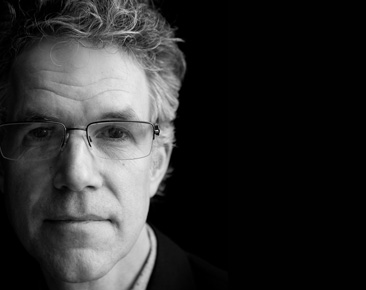
If this week’s column seems at all disjointed, it’s only because The Night Drivers and I are in the studio all this week, and I’m writing this in between takes of our new medley of Next Sunday Darling is My Birthday and One Night in Bangkok.
It got me thinking about the whole recording process, though, and how different that process can be, depending on what kind of budget you usually work with.
We in the bluegrass music world tend to work with budgets that shock people in other genres of music for their austerity. In Nashville, if I mention our typical recording budget to someone in the country or Christian music business, they either laugh openly, or they say something like, “I don’t mean your photography budget, what do you spend on the recording.” Other times I just get a pitying kind of look, similar to the look I’d get if I just described how my dog “Squiggles” was run over by a furniture truck. It’s the “I’m so glad I’m not you” look.
Even within bluegrass music, there’s a wide range in recording budgets, literally ranging from $100,000 + at the top end to, well, zero at the bottom end.
I have to confess that I kind of like smaller budgets for recording (please don’t tell my record label I said that), partly because I don’t like recording projects to drag on. I’m also not a fan of the “perfect” record, and perfection is sometimes what you end up striving for if you have a lot of money to spend on a lot of studio time.
Some of my most favorite bluegrass recordings were done very quickly and cheaply, some recorded in a single day. On the other hand, I’ve heard a lot of high-budget, “perfect” bluegrass albums that were very impressive on first listen, but that I never really had a desire to listen to again. There are exceptions, naturally. We’ve all heard recordings that clearly would have benefited from one more take on a song or two (one in which the bass player was playing in the same key as the guitar player, for example).
Many with little or no experience in the studio might wonder how there could be that big a difference in time and money spent from one recording project to another, and further, how that difference would manifest itself in the recording process.
I thought it might be helpful to describe a typical day in the studio during low and high budget recordings:
Low Budget Recording, Day One:
Studio: Their studio of choice costs $25/hour including engineer (the mandolin player’s cousin) and is in the back room of a barn.
10:00- 10:30 AM: The band arrives at the studio, after yesterday’s rehearsal, making sure arrangements are set for the day’s recording.
The engineer gets set up and gets tones set for the various instruments.
10:30-11:00 AM: The band plays its first take of the album’s first song. A goat walks through the session and begins chewing on the banjo player’s shirt. A second take is necessary.
11:00 AM- noon: After a couple of minor bass retakes, the first rhythm track and lead parts are done. It’s on to the second song.
12:00 noon: Two more tracks are done. The mandolin player feels he had a few chops out of place. The producer (everyone in the band) decides it’s fine and everyone moves on.
1:00-2:00 PM: Pizza is delivered and eaten. Everyone chips in except the mysteriously absent fiddle player.
2:00-5:00 PM Five more songs are tracked, with lead vocals recorded live.
The recording day is over. Plans are made to return tomorrow morning to do four more songs and record all harmony vocals. Mixing will be completed by the end of the week.
Totals for session:
Eight songs recorded with lead vocals and some instrument fixes and overdubs
Money spent, excluding pizza: $150
A guest dobro player was also used, but he has agreed to play in trade for two dozen eggs and some goat’s milk.
High Budget Recording, Day One:
10:30 – 11:00: Four of the band members arrive at the studio. The producer was there but has run out for more coffee. The lead singer is outside smoking a cigarette.
The studio is on Music Row in Nashville and costs $125/hour including engineer (the friends and family rate). There are a lot of framed platinum records on the wall, and the engineer does a lot of name-dropping.
11:00 – noon: The engineer works on bass tones. The producer and two of the band members discuss the demise of the Cardinals in the playoffs last fall. The engineer, while running the bass through a different processor, mentions going to a Mets game two years ago with “Tim and Faith” (“We got luxury box seats thanks to the connection with Tug,” he adds).
12:00 noon – 1:00 PM: The bass player takes a coffee break, while the mandolin player starts playing into a microphone. The engineer is somewhere else in the building. The guitar player is looking over the chart for the first song.
1:00 – 2:00 PM: Sushi is delivered and charged to the recording tab.
2:00 – 3:00 PM: Tones are set for most instruments, although the fiddle player has left to run an errand.
3:00 – 4:00 PM: Several takes are done on the first rhythm track. The producer expresses second thoughts about the arrangement, and a discussion ensues with the lead singer who wrote the song. An adjustment is made and they do three more takes.
5:00 – 6:30 PM: They settle on a take they like and spend the rest of the day on rhythm guitar and bass punches in the fourth line of the third verse.
6:30 – 7:00 PM: The rest of the band leaves, while the lead singer puts several takes of a scratch vocal down on the track
Totals for session:
One rhythm track partially completed, without any lead instruments. Plans are made to recut all the rhythm guitar the next day.
Money spent, including sushi: $1,190
If we check in on these two projects one month later, we find that the band recording in the barn already has the shrink-wrapped product in hand and has spent $2,500, including mastering, photos, and the catering for their album release party.
The band working with the large budget is doing fixes of the baritone part on the chorus of one of the five songs they have partially finished. The banjo player has quit and moved to Australia. They’re discussing replacing his parts. They’ve run through $22,000 of their budget so far.
I wonder if anyone’s ever thought of trying to get a $75,000 budget, then recording the whole thing in one day like Jimmy Martin would do anyway, then putting $74,000 down on a house by the lake (with a good room for a recording studio and/or a goat pen).






